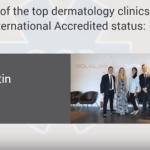Zagreb’s rise in tourism has been rapid in recent years, but one of its main potential growth areas is still largely untapped. TCN reports on the potential – and the outstanding all-round excellence – of Zagreb’s booming medical tourism industry on September 20, 2017.
It is a little-known fact that organised tourism in Europe began in Croatia. On the island of Hvar in fact. Today, Europe’s sunniest island is known as one of the 10 most beautiful islands in the world, with more UNESCO heritage than any other in the world, but back in 1868, Hvar was known in elite circles in Vienna and Budapest as the Austrian Madeira.
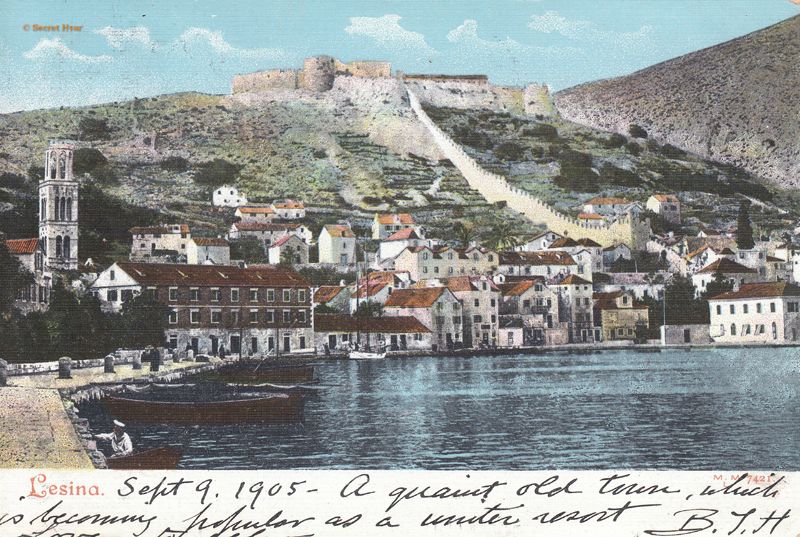
(Photo credit Secret Hvar)
With its temperate climate, organised health tourism began way back in 1868 with the founding of the Hvar Health Society. While today the island is enjoyed by sun seekers, partygoers and culture addicts, back then it was the soothing climate of the island which was its main attraction.
It is an anniversary which will be celebrated in 2018 – 150 years of organised tourism in Europe, the latest string in Croatia’s impressive bow of tourism credentials. As the country enjoys yet another record season based on its sun and sea tourism, behind the scenes there is a quiet revolution going on, which is bringing the country back to its original tourism focus – health.
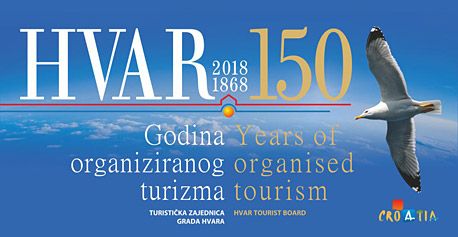
Whisper it quietly, but Croatia – and particularly its capital Zagreb – is quietly establishing itself as a high quality medical tourism destination, with several factors in the works to quickly accelerate the capital’s health tourism potential.
Croatia has never been on the traditional map as a medical tourism destination, and yet if you research a little, the expertise and respect afforded Croatian health professionals is there for all to see. In the last few weeks, for example, a Croatian doctor has been appointed to head the medical team at one of the world’s biggest football clubs, Real Madrid, while Dr Alan Ivkovic became the first surgeon in the world to use nose cells to repair damaged knee cartilage, and cardiac surgeon Tomislav Mihaeljevic MD became President and CEO of Cleveland Clinic.
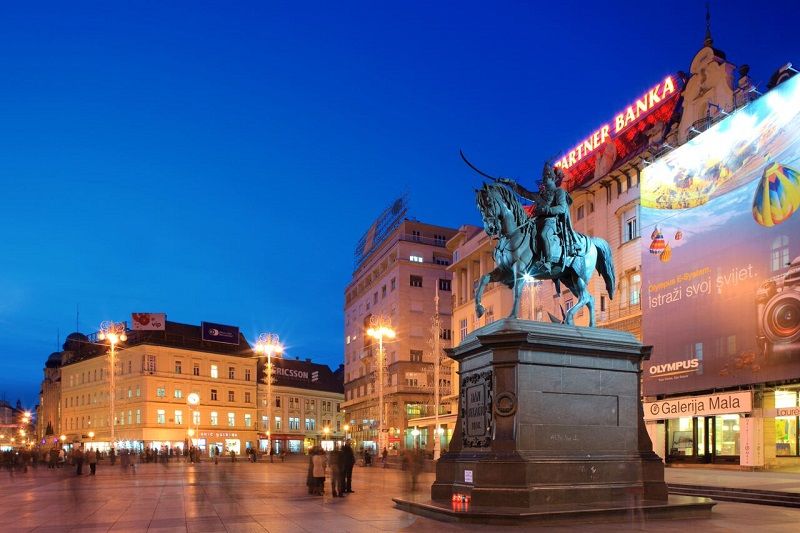
(Copyright Romulic and Stojcic)
Gone are the days where Croatia’s only medical claim to fame was Goran Visnjic as the sexy doctor in hit show ER, and rapid progress is being made in a number of disciplines, as we shall see below, with world class care and expertise on a par with the very best on the planet.
Assuming the quality of care is there – something where there should be no compromise, of course – what could Croatia potentially offer to international patients? Price is an obvious major incentive, as is the opportunity to combine a visit with a holiday. And there are few better places to relax in Europe these days than the hip Adriatic coast and islands which are the jewels of Croatian tourism. A recent visitor from the United States decided to do that, embarking on major dental surgery which included 24 crowns. His journey lasted 12 days, including a luxury stay at the Zagreb Double Tree Hilton, conveniently located in the same building as the Poliklinika Bagatin, which carried out the surgery, after which the polyclinic arranged onward travel and accommodation to the stunning Adriatic coast. The customer’s saving including flight and free luxury holiday? Around US$35,000.
Quality and affordable healthcare tick two important boxes, but a crucial part of the jigsaw is accessibility. Croatian dental tourism is quietly booming in Italy, with busloads of Italians making the short trip to Istria and Rijeka to have their teeth fixed, with one Rijeka clinic now employing an astonishing 120 dentists, but air access to the capital Zagreb is key, and this is one area where the Zagreb medical tourism story gets very interesting.
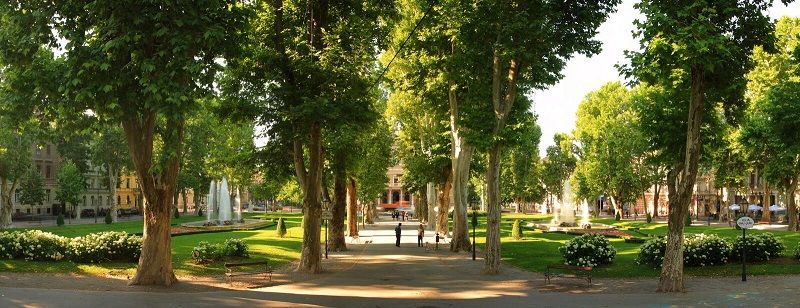
(Copyright Romulic and Stojcic)
Croatia’s Adriatic airports of Split, Dubrovnik, Zadar, Rijeka and Pula are enjoying record collective traffic, as the Croatian tourism story expands, but Zagreb is experiencing a different type of boom, and one which is ideal for a cohesive strategy to promote Zagreb’s medical tourism potential.
A sexy 330 million euro new terminal at Zagreb Airport has finally given the city the aviation welcome it deserves, and the new terminal is already attracting some rather interesting clientele. On June 1 this year, Emirates launched a daily flight to Zagreb from Dubai, thereby connecting the world, with the intention to make the route all year. Emirates follows in the path of Qatar Airways, who have recently announced a doubling of flights from their current ten a week. With those two routes alone, Zagreb medical tourism is connected to the profitable Asian and Middle Eastern markets. Korean Air is in discussions for year-round flights.

(The new Zagreb Airport terminal)
The news from Europe is also encouraging. While much of the focus of incoming flights is on the coast, European airlines are beginning to listen to the destination which had more tourists overnighting than any other in Croatia last year. Norwegian has decided to extend flights until the end of December from Stockholm and Copenhagen, Monarch is flying through the year from the UK, and others will follow. This is of course without the accessibility of potential patients within a short drive. Slovenia (which already makes up a sizable percentage of Croatia’s foreign medical tourists), Italy, Switzerland, Austria and Germany are all within easy driving distance for treatment at a fraction of the cost, with comparable treatment quality.
Branding Croatia as a top medical destination requires a cohesive approach, and here too, things are moving in the right direction. Minister of Tourism Gary Cappelli recently announced plans for a 400 million euro investment in health tourism being prepared, while – for the first time ever – some 2 million kuna (270,000 euro) has been allocated for the promotion of health tourism.

(Copyright Romulic and Stojcic)
A little intelligent marketing to tap into Croatia’s tourism offer could increase this niche tourism market immeasurably. Other destinations with music festivals offer special dental tourism packages, for example, and the ability to offer a great medical package to compliment a tourism offer is perhaps the biggest growth potential of all. Advent in Zagreb, an event which barely existed a few years ago, but which has been voted the best Advent in Europe for the last two years, would be an ideal way to enjoy a unique tourism experience while undergoing necessary surgery for a fraction of the cost back home.
Another great potential growth area is teaming up with the state health insurance companies of Western Europe and Scandinavia. With a standard of treatment on a par with more developed countries, but with costs considerably cheaper, the savings state health insurance companies can make working with Croatian medical excellence are considerable, and in some instances, that care can be considerably better.
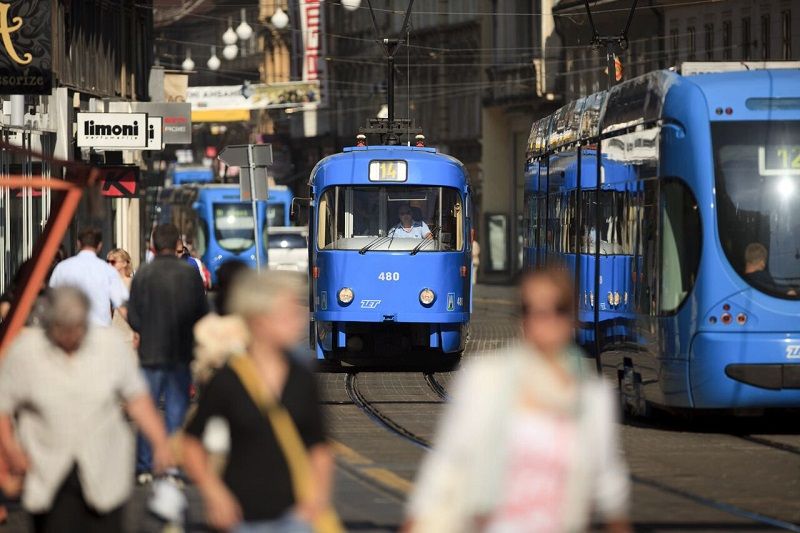
One example to demonstrate this is cataract surgery. Mono-focal cataract surgery in the Netherlands costs 2500 euro for the classic treatment, but only 1200 at Croatia’s leading eye clinic, Svjetlost. In addition to mono-focal cataract treatment, Svjetlost also offers multi-focal lens treatment for 1800 euro, a much better proposition for the patient, and more than 30% of patients opt for the multi-focal option, compared to just 2% in the Netherlands. The reason? Mono-focal treatment is all that is covered by the state health insurance companies. Come to Croatia, and there exists not only better prices and a tourism experience, but also the possibility of better care. The potential to team up with international state health insurance companies for mutual financial benefit is mouth-watering indeed.
Price, tourism, accessibility – all that remains to make the Zagreb medical tourism story a force to be reckoned with is the most important factor of all – quality of care. And this is where the Zagreb medical tourism story gets VERY interesting.
In researching this article, I paid a visit to three leading clinics, pioneers in their various fields, and with surgeons and reputation which stand proudly alongside the very best in Europe. All three have very different levels of focus, backgrounds and success stories – and they are not alone – but they have some things in common: they are private initiatives, receive zero or almost zero revenue from the Croatian health system, but are slowly putting Croatia on the healthcare map through excellent health care. A little like Croatia’s disproportionate success on the sporting field for such a small country, Croatia’s healthcare excellence will surprise you, and it will also be something you will be hearing a lot more of.
As a symbol of Croatian medical excellence, there is no finer example than St. Catherine’s Specialty Hospital, which is introduced as follows by the International Medical Travel Journal:
“A European centre of excellence and member of ‘The Leading Hospitals of the World’, St Catherine Specialty Hospital in Zabok, Croatia is an internationally recognised hospital specialising in orthopaedic surgery and sports medicine, spinal health, medical imaging, neurology, gastroenterology, physical medicine and rehabilitation, and anaesthesiology and pain management. In addition to a full range of services in Zabok, St Catherine provides physical rehabilitation and seven specialist clinics at its polyclinic in Zagreb, as well as orthopaedic consultations at a satellite clinic in Split.”

St. Catherine’s is so much more than that. Croatia’s only private R&D facility, the hospital is a pioneer in personalised medicine, offering on-site all-in-one care, from diagnostics and operation right through to recuperation. Working at the forefront of developments in orthopaedics, St Catherine also conducts mesenchymal stem cell treatment for patients with osteoarthritis and cartilage lesions, as well as arthroscopic knee meniscus transplantations. St Catherine’s is also a teaching hospital, licenced to carry out bio-medical research, and it enjoys strong international research relationships, including the European Commission’s Pain-OMICS programme.

A quick who’s who from the world of sport will give an indication of the regard St. Catherine’s is held among professional athletes (the hospital has is an official relationship with health care provider for both the Croatia Olympic Committee and the Croatia Football Federation): Garry Kasparov (former World Chess Champion), Marin Čilić (Winner of the US Open 2014 ), Aleksandr Viktorovich Khoroshilov (the first Russian male to win a World Cup race (Schladming, 2015) since 1981) Gordan Giriček (NBA player: Memphis Grizzlies, Orlando Magic, Utal Jazz), Bojan Bogdanović (NBA player: Brooklyn Nets), Mario Mandžukić (football player: Juventus, Italy and Croatian National Soccer Team), Luka Modrić (football player: Real Madrid, Spain and Croatian National Soccer Team), Ivan Rakitić (football player: Barcelona, Spain and Croatian National Soccer Team).

St. Catherine’s is the brainchild of Prof. Dragan Primorac, M.D.,PhD and wife Jadranka Primorac, M.Sc who opened the facility in 2011. Primorac is a university professor at 3 European and 2 US universities, paediatrician, geneticist and forensic science expert, who serves as Global Ambassador of The Penn State University and the Chair of International Affairs Committee of the American Academy of Forensic Sciences. He is also a former minister for science, education and sports in Croatia. Mrs. Primorac is a former Chief economic advisor to three ministers of the foreign affairs of the Republic of Croatia. She is executive with a background in healthcare management, consulting and operations with a particular focus in strategic relationships, financing and marketing. Likewise, she is one of the pioneers in medical tourism in Croatia.
Working with global medical partners, the Primorac couple has established St. Catherine’s as one of the best hospitals in Europe, and one which enjoys strategic partnerships with global players such as Phillips. St. Catherine’s closely collaborates with numerous European and U.S. clinics including Unfallkrankenhaus Berlin (Germany), Regiomed-Kliniken (Germany), Carolina’s Pain Institute (USA), etc. St. Catherine’s has 40% of its patients from the United States, Western Europe and Russia. It is a private business which depends almost exclusively on private revenue from clients, with just 8% of last year’s income coming from the Croatian state insurance company (for MRI diagnostics).
That ratio looks set to change as St. Catherine’s sets out on an ambitious expansion plan into the heart of Europe, and the first international St. Catherine’s Specialty Hospital is due to open in 2018, with the construction of a new facility on a plot next to Berlin’s second-best hospital underway. Once opened, the new hospital will be able to treat German patients with state health insurance.
Even without the Berlin expansion, the rise of St. Catherine’s has been impressive to watch, and more than 30,000 patients were treated last year, an annual rise of 20%. Not content to merely promote his own hospital, Primorac has been very active internationally in raising the profile of Croatia’s medical pedigree abroad. Perhaps the best example of this is his bringing of the 10th ISABS Conference on Forensic and Anthropologic Genetics and Mayo Clinic Lectures and Individualised Medicine to Dubrovnik, an event, which included three Nobel prize winners among its participants.
While St. Catherine’s expands to the heart of Europe, the approach of Croatia’s leading eye clinic is much more regional, and business is just as brisk. Starting from humble beginnings with one surgeon and a rental apartment, Svjetlost (the Croatian word for ‘light’) now runs its rapidly increasing operations from a 8-storey building comprising 2,000m2 close to the centre of Zagreb, and with plans to build something twice as big in the coming years on the plot next door, such is the demand.
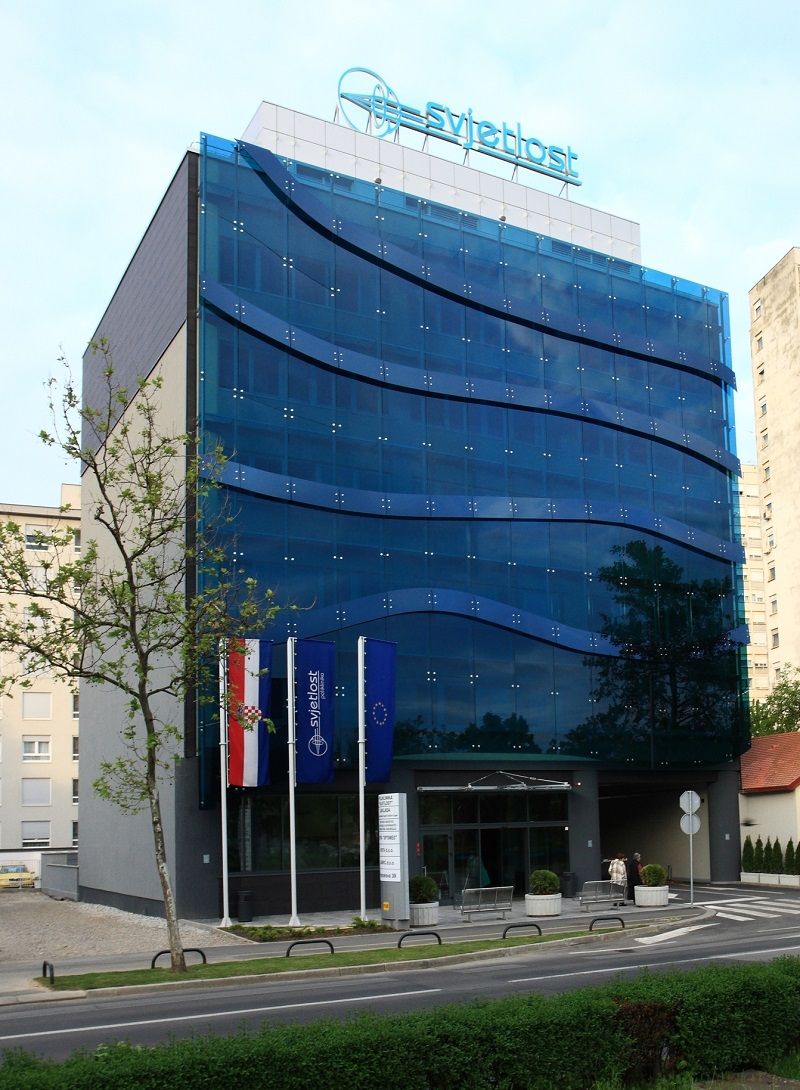
That first surgeon was Svjetlost founder Prof. Nikica Gabric, Ph.D., who has carried out more than 40,000 cataract surgeries, glaucoma, refractive surgeries, corneal transplantation, and strabismus in some 17 countries, including the prestigious Fyodorov Institute in Russia. Gabric’s team has expanded and now includes more than 25 doctors, including Dr Maja Bohac, whose mentoring by Gabric was complimented by additional training in London, Barcelona, Zurich, Cologne and Strasbourg. Recognised in the US as Surgeon of the Month by the International Society of Refractive Surgery, Bohac has performed over 15,000 laser surgeries, and is a regional pioneer in using new laser technologies, including femtosecond lasers and the laser removal of presbyopia.
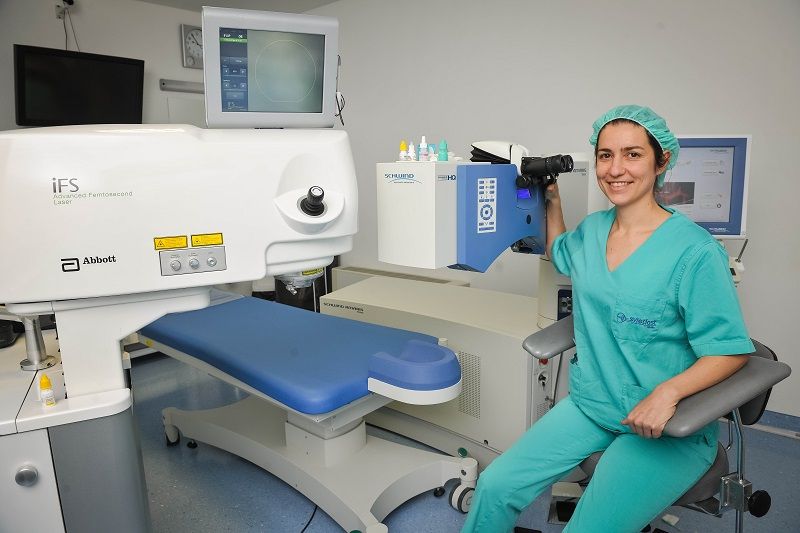
(Dr. Maja Bohac of Svjetlost)
Unlike teeth, where one can change a dentist, eye surgery is much more precise and has less room for second chances, and so trust is an important element which Svjetlost has built up over the years to become the most respected name in the region – and increasingly internationally. Since commencing operations, Svjetlost has serviced clients in over 100 countries, including Swaziland and the Dominican Republic, while the main international markets are Slovenia, Italy, Germany, Austria, UK, Scandinavia and Switzerland.
The clinic is 100% self-financed, receives all its income from private clients, and is expanding rapidly. 2016 was a record year, and 2017 projections indicate that this year will see an impressive increase of 18%. While the quality of care, experience of surgeons and modern technology available matches that of anything in Western Europe, eye treatments at Svjetlost can be typically 2-3 times cheaper than elsewhere in Europe. Many operations can be done in minutes, with a follow-up check-up required, allowing patients to then relax in Zagreb and explore Croatia’s wonderful coast and capital city, if they have decided to combine treatment with a tourism break.
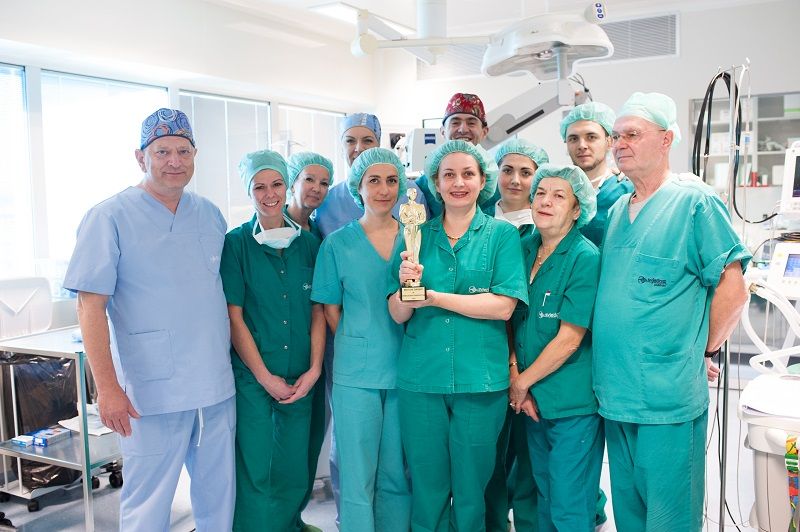
(The Svjetlost team with their ophthalmic Oscar)
A very noticeable aspect of the Svjetlost team is its regional makeup. Doctors and interns from other parts of former-Yugoslavia are flocking to join the Svjetlost team, allowing the clinic to attract the brightest regional talent at a time when many of Croatia’s finest young brains are emigrating. This regional approach is reflected in the expanding Svjetlost coverage in the region, and in addition to additional clinics in Sarajevo and Banja Luka, Svjetlost has know how partnerships in both Macedonia and Montenegro, as well as a special relationship with the University of Rijeka. Specialty Eye Hospital Svjetlost is affiliated to the Faculty of Medicine in Rijeka, serving as the Ophthalmic Clinic of the University of Rijeka. According to Croatian Healthcare Law, the clinic has to provide the most complex healthcare services, conducting scientific research and providing university study programme (our employees are researchers and professors and we provide specialization for ophthalmology residents). Svjetlost was the first private-owned university clinic in Croatia (from 2010, before Svjetlost was a Polyclinic).
One of the most successful medical tourism businesses, and arguably the most dynamic, is Poliklinika Bagatin, whose superbly equipped tenth-floor clinic in the Zagreb Double Tree Hilton makes it an ideal location for patients combining their stay with excellent accommodation. Specialising in four key disciplines – cosmetic surgery, dermatology, cosmetology and dentistry – Bagatin’s reputation for excellence extends far beyond Croatia’s borders, and its rapid rise from just one employee in 2008 to more than 70 by the end of 2016 and a projected turnover of 4.5 million euro in 2017, is testament to the potential of Croatian medical tourism when a professional approach combines with medical excellence.

That one initial employee was the late Professor Marijo Bagatin,Ph.D., one of the world’s most renowned maxillofacial specialists for cleft surgery. Bagatin’s pioneering work has been taken over by his sons, two of whom are specialists in the business, while the third is running a successful clinic and trailblazing around the globe promoting the Croatian medical tourism story. From those humble beginnings, Bagatin is now regarded as one of the leading regional institutions for plastic surgery, dermatology and dental medicine.
The Bagatin team today comprises 24 experts among the staff, who operate in 24 separate consulting rooms, who had treated more than 13,000 satisfied clients by the end of 2016. Interestingly, Bagatin’s rise has been fuelled by the domestic market, despite receiving zero business from the state insurance company, and those impressive revenues comprise 94% of domestic clients, with the main international markets being Germany, Austria and Switzerland.
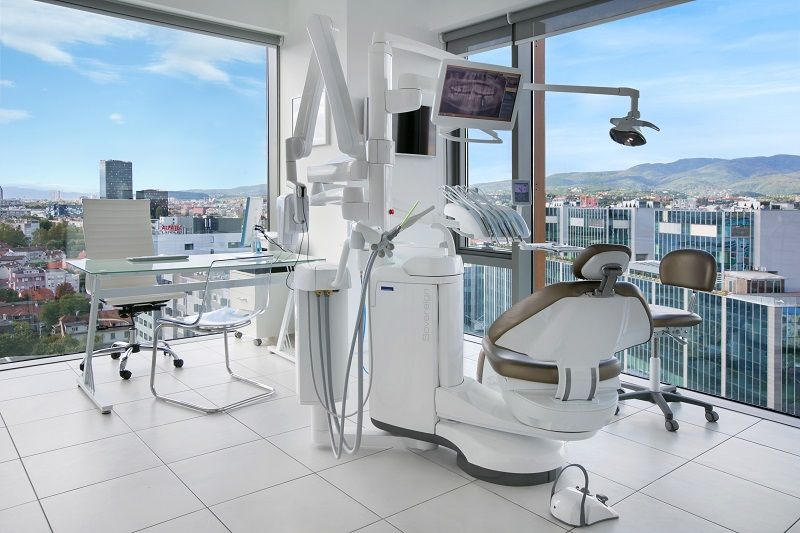
Word is starting to get out however, and a highly effective marketing campaign is pushing Poliklinika Bagatin into the international sphere. At the 2017 IMTJ medical travel awards, Bagatin received a gold for international cosmetic surgery clinic of the year, as well as a bronze for best marketing initiative, and the clinic has been very active in international conference sponsorships, including silver sponsors at both the HTI Conference and IMTJ Summit, gold sponsor at WMTC in Los Angeles, and a platinum sponsor at this year’s ITW in Abu Dhabi.
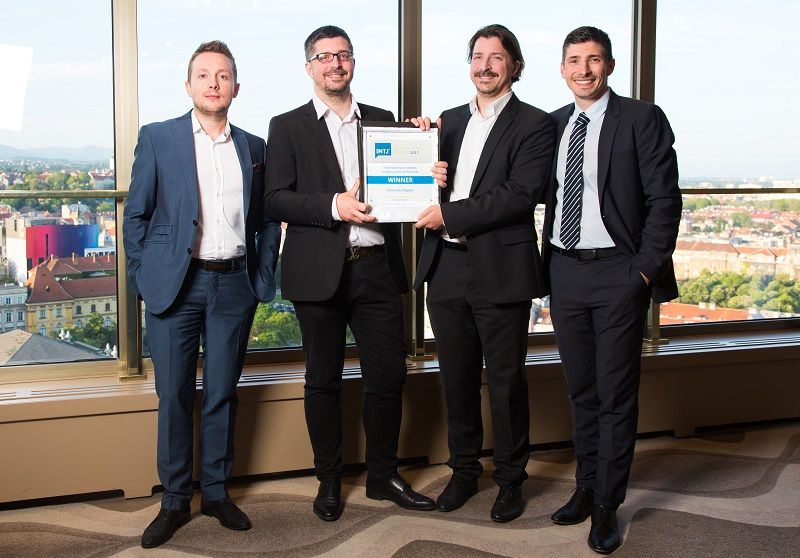
(The Bagatin team with their IMTJ award)
Patient confidence in a clinic is enhanced with the quality of modern equipment and well-known international partners, and here too Bagatin excels, with partner agreements with some of the top names in the industry, including Allergan Inc., Asclepion Laser Technologies, Biolase, Canfield Scientific, General Project, Planmeca and REVIDERM.
Ognjen Bagatin, CEO and one of the owners of Poliklinika Bagatin, is a driving force to push Zagreb forward as a medical tourism destination. Asked about the competitive advantages of Zagreb as a destination, he had this to say:
The City of Zagreb, capital of Croatia, is the cultural, architectural, artistic, musical and gastronomic centre of Croatia. It has all the facilities and all the other things that make a quality capital city. For the last two years, Zagreb was nominated and announced for the Best Christmas Market in Europe. It certainly helps with the implementation of the „Zagreb 365“ program and it’s no surprise that the number of visitors has risen sharply for recent years, not only during summer months but through the whole year.
Zagreb is a city of green parks and walks, with many places to visit. Everything is accessible on foot – from your hotel to the theatre, green areas and lakes, wandering around the old Upper Town or through the bustling streets of the more modern Lower Town, which has not lost an ounce of its charm despite the eternal march of time.
The accommodation and gastronomic offer in Zagreb is rich and diverse, and thus suitable for everyone’s price range, meaning, an excellent price/quality ratio which is an important departure factor for every tourist going abroad.
Zagreb is our jewel. Croatia’s coastal attractions aside, Zagreb has finally been discovered as a popular city-break destination in its own right.
If our work on destination management is done smartly and with quality in all areas of tourist services, I think we can really talk about „Croatia 365“ program that our Minister of Tourism is talking about.
It is almost 150 years since the Austro-Hungarian elite came to Croatia to convalesce with the Hvar Health Society in 1868. Much has changed in the century and a half in between, but Croatian commitment to medical excellence has not. The road to Zagreb from Vienna is much quicker these days, the medical care not so elitist in price, and Austrians are just one of a number of nationalities who are starting to discover the considerable benefits of medical tourism in Croatia. Have you checked out Zagreb as the medical tourism destination yet?
To learn more about the clinics featured in this article, visit their official websites:
https://www.svkatarina.hr/en
http://svjetlost.hr/en
http://www.poliklinikabagatin.hr/eng/



